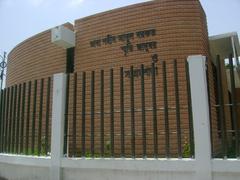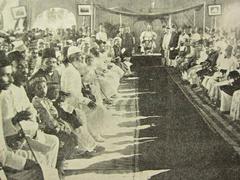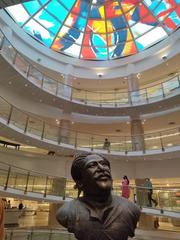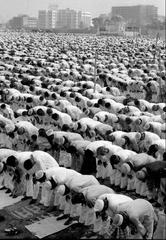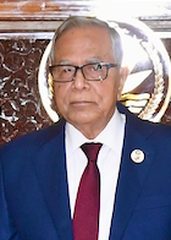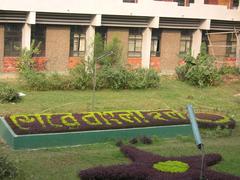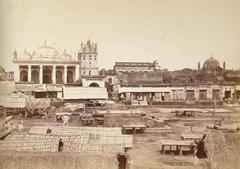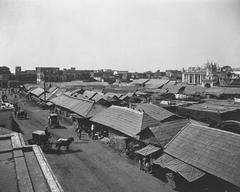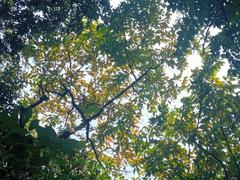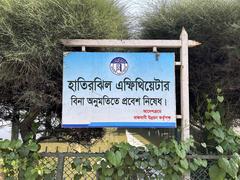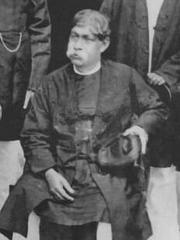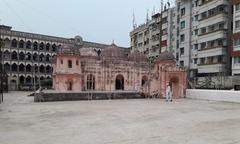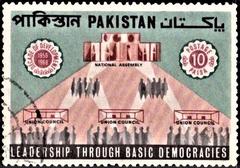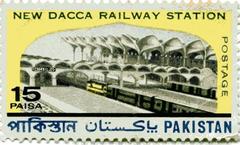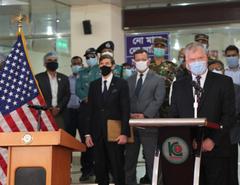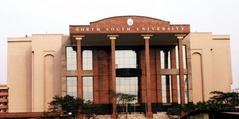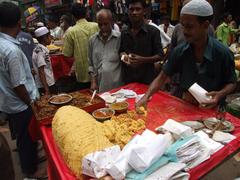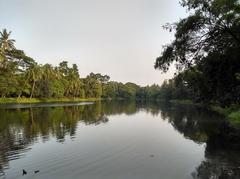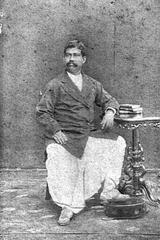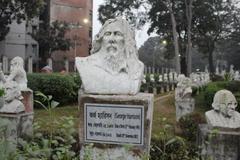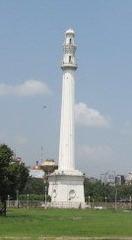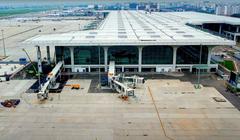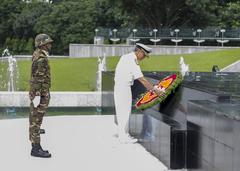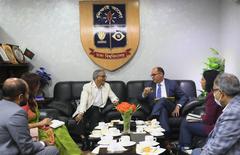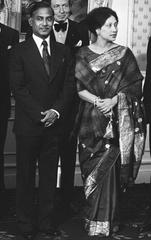Shaheed Abrar Fahad Avenue Dhaka: Visiting Hours, Tickets, and Historical Significance
Date: 04/07/2025
Introduction
Shaheed Abrar Fahad Avenue, formerly known as Bangabandhu Avenue and, before that, Jinnah Avenue, is one of Dhaka’s most iconic and historically resonant thoroughfares. Located in the heart of the city near Gulistan, this avenue is a living testament to Bangladesh’s political evolution, cultural diversity, and vibrant urban life. Renamed over time to honor pivotal figures in the nation’s history—including Sheikh Mujibur Rahman, the Father of the Nation, and Abrar Fahad, a student whose tragic death galvanized public discourse—the avenue encapsulates the resilience and dynamic spirit of Dhaka.
This guide provides a comprehensive look at Shaheed Abrar Fahad Avenue: its origins, political and cultural significance, practical visitor information (including hours and ticket details), nearby attractions, and tips for a meaningful and safe visit. Whether you are a history enthusiast, a cultural explorer, or a curious traveler, this avenue offers an immersive experience into Bangladesh’s past and present (ToursnTripsBD; Wikipedia; Daily Star).
Table of Contents
- Introduction
- Origins and Historical Evolution
- Political and Social Significance
- Everyday Life and Social Dynamics
- Visiting Information: Hours, Tickets, Accessibility
- Transportation and Getting There
- Nearby Attractions and Amenities
- Safety, Etiquette, and Visitor Guidelines
- Frequently Asked Questions (FAQ)
- Visual and Interactive Content Recommendations
- Conclusion
- References
Origins and Historical Evolution
Shaheed Abrar Fahad Avenue has undergone significant transformation in both name and purpose over the decades. Originally called Jinnah Avenue during the Pakistan era, it was renamed Bangabandhu Avenue after the country’s independence in 1971 to honor Sheikh Mujibur Rahman—Bangabandhu, or “Friend of Bengal”—the architect of Bangladesh’s liberation. Following a national reckoning with political violence, the avenue was renamed again in memory of Abrar Fahad, whose death in 2019 symbolized ongoing struggles for justice and accountability.
Throughout its history, the avenue has served as the stage for pivotal national moments: mass protests, celebrations, and tragic episodes of political violence. Its evolving identity mirrors the trajectory of Bangladesh itself—marked by resilience, activism, and a quest for unity (The Diplomat).
Political and Social Significance
Political Epicenter
Shaheed Abrar Fahad Avenue is the heart of Bangladesh’s political life. It houses the central office of the Bangladesh Awami League, the party at the forefront of the country’s independence movement and contemporary politics. Iconic events, such as the 7 March Speech of 1971—recognized by UNESCO for its historical impact—were rooted in this area (Wikipedia). The avenue has also witnessed major political rallies, protests, and commemorations, making it a center for civic engagement and public discourse.
Symbol of the Liberation Struggle
The avenue is adorned with murals, banners, and statues dedicated to Bangabandhu Sheikh Mujibur Rahman. National holidays like Independence Day (March 26) and National Mourning Day (August 15) draw thousands to the avenue, transforming it into a venue for reflection and collective memory (Daily Sabah).
Site of Political Violence and Resilience
Notably, the avenue was the site of the 2004 grenade attack at an Awami League rally, a tragedy that highlighted the volatility of Bangladeshi politics but also its enduring spirit of resilience (The Daily Star). Despite such incidents, the avenue remains a powerful symbol of the nation’s ongoing struggle for democracy and justice.
Everyday Life and Social Dynamics
Street Culture and Daily Rhythms
From dawn to dusk, Shaheed Abrar Fahad Avenue pulses with life. Street vendors sell an array of snacks—samosas, jilapis, chotpoti—while tea stalls and small shops offer spaces for conversation and socializing (ToursnTripsBD). The avenue buzzes with rickshaws, buses, and pedestrians, reflecting Dhaka’s kinetic urban rhythm.
Commerce and Markets
The avenue is adjacent to major commercial hubs like Gulistan Market, which is renowned for its affordable clothing, electronics, and household goods. Markets such as Hall Market and Khaddar Bazaar add to the area’s economic vibrancy. Haggling is part of the shopping experience, and the street food scene is a highlight for culinary explorers.
Cultural Diversity and Urban Identity
Shaheed Abrar Fahad Avenue draws people from across Bangladesh, creating a mosaic of languages, traditions, and lifestyles. Its layered history—from Jinnah Avenue to its current name—reflects the city’s evolving identity and the nation’s shifting narratives (TBS News).
Religious and Festive Life
The area is home to mosques, temples, and churches, with religious festivals such as Eid, Durga Puja, and Christmas celebrated in grand fashion. During these times, the avenue comes alive with processions, lights, and communal gatherings.
Art and Public Expression
Murals, posters, and occasional street performances serve as outlets for public expression. Memorials, especially those honoring Abrar Fahad, invite visitors to reflect on the nation’s history and ongoing quest for justice (Wikipedia).
Visiting Information: Hours, Tickets, Accessibility
- Visiting Hours: Shaheed Abrar Fahad Avenue is a public street and accessible 24/7. For safety and optimal experience, visit between 8:00 AM and 7:00 PM.
- Tickets/Entrance Fees: No entry fee is required to visit the avenue or its markets. Some nearby attractions, such as the Bangabandhu Museum, may charge a nominal fee (typically under 100 BDT).
- Accessibility: The avenue is moderately accessible. Sidewalks can be crowded and uneven—visitors with mobility challenges should plan accordingly.
- Guided Tours: Several local operators offer guided walking tours, especially during national holidays or cultural events.
Transportation and Getting There
Shaheed Abrar Fahad Avenue is easily accessible from all parts of Dhaka:
- Bus: The nearby Gulistan Bus Terminal is a major hub, with routes covering key city landmarks (bus route details).
- Rickshaw/CNG: Cycle rickshaws and auto-rickshaws (CNGs) are convenient for short distances.
- Taxi/Ride-Sharing: Pathao, Uber, and local taxis offer safe and comfortable alternatives.
- On Foot: Central neighborhoods such as Motijheel and Paltan are within walking distance.
Nearby Attractions and Amenities
- Gulistan Market: A bustling underground market for clothing, electronics, and accessories.
- Bangabandhu National Stadium: The country’s largest sports arena, open for ticketed events.
- Golap Shah Mazar: A Sufi shrine, open daily with free entry.
- Mohanagar Natyamancha: A cultural venue for theater and music performances.
- General Post Office (GPO): A historic colonial-era building.
- Local Eateries: Sample traditional Dhaka biryani, kebabs, and desserts like Baby Ice Cream.
Safety, Etiquette, and Visitor Guidelines
- Safety: Be vigilant in crowded areas, especially around markets and during political events. Pickpocketing can occur—keep valuables secure (wikiofinfo; tripjive).
- Etiquette: Dress modestly, particularly when visiting religious sites. Always seek permission before photographing people.
- Cultural Sensitivity: Greet locals with “Salam” or “Nomoskar.” Respect prayer times and local customs.
- Health: Consume food from reputable vendors and carry bottled water. Public restrooms are limited; use facilities in malls or hotels when available.
- Transportation: Allow extra time for travel due to frequent congestion.
Frequently Asked Questions (FAQ)
Q: What are the visiting hours for Shaheed Abrar Fahad Avenue?
A: The avenue is open 24/7, but visits during daylight (8:00 AM–7:00 PM) are recommended for safety.
Q: Are there tickets or entrance fees?
A: No ticket is required for the avenue itself; some nearby attractions may charge a small entry fee.
Q: Is Shaheed Abrar Fahad Avenue safe for tourists?
A: Generally yes, but be vigilant in crowds and during political events.
Q: Are guided tours available?
A: Yes, several local tour operators include the avenue in city walking tours.
Q: How do I get there?
A: By bus (Gulistan Terminal), rickshaw, CNG, taxi, or on foot from central Dhaka.
Visual and Interactive Content Recommendations
- Include high-quality images with descriptive alt tags—e.g., “Shaheed Abrar Fahad Avenue vibrant street scene in Dhaka.”
- Embed interactive maps showing transportation routes and landmarks.
- Consider virtual tours to showcase the street’s atmosphere and key sites.
Conclusion
Shaheed Abrar Fahad Avenue is not just a roadway—it is a living chronicle of Bangladesh’s journey toward democracy, justice, and cultural pluralism. From its shifting names to its role as a political and commercial hub, the avenue reveals the layers of Dhaka’s past and present. Visitors will find not only historic sites and bustling markets but also the enduring spirit of a community shaped by activism, resilience, and hope.
For the most enriching experience, plan your visit during daylight hours, take advantage of guided tours, and respect local customs. Stay updated with travel tips and city news, and make use of tools like the Audiala app for real-time information and curated experiences.
References
- This guide is informed by leading sources and official information:
- Exploring Bangabandhu Avenue: Visiting Hours, Attractions, and Dhaka Historical Sites, 2025, ToursnTripsBD (ToursnTripsBD)
- Shaheed Abrar Fahad Avenue: A Visitor’s Guide to Dhaka’s Historic and Cultural Hub, 2025, Wikipedia (Wikipedia)
- Visiting Bangabandhu Avenue: History, Political Significance, and Travel Tips in Dhaka, 2025, Daily Star (Daily Star)
- Commemorative Practices and Public Memory on Bangabandhu Avenue, 2025, TBS News (TBS News)
- Bangladesh Old Myths, New Country, 2025, The Diplomat (The Diplomat)
- Sheikh Mujibur Rahman, Wikipedia (Wikipedia)
- Additional practical travel and safety advice (wikiofinfo; tripjive)
For more travel resources, guided tours, and up-to-date information, consider downloading the Audiala app and following our latest articles on Dhaka’s historical and cultural attractions.
